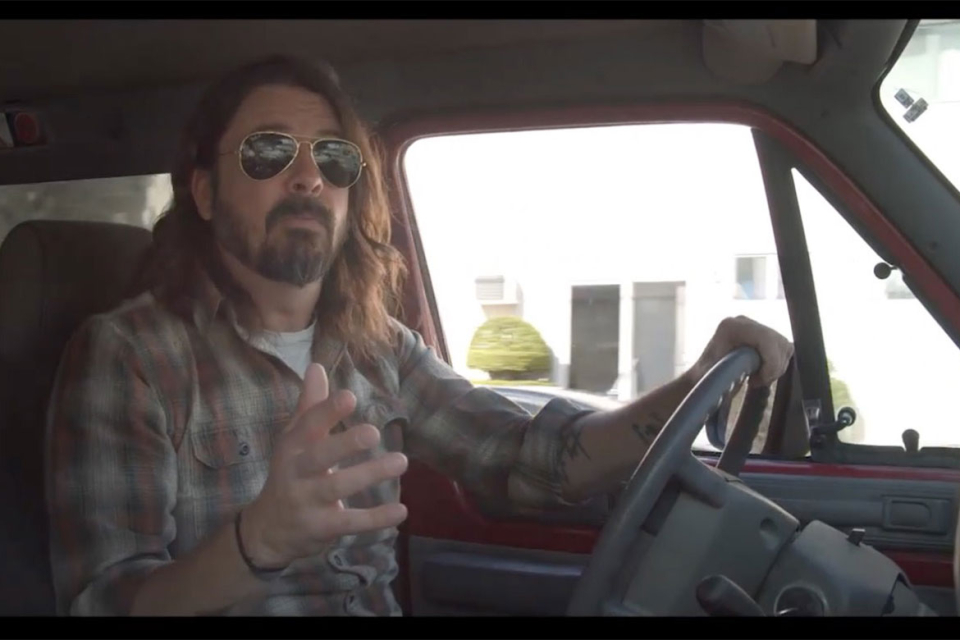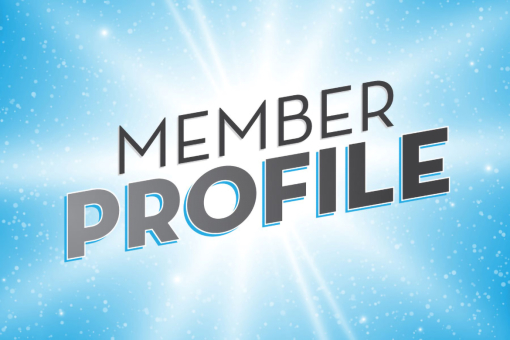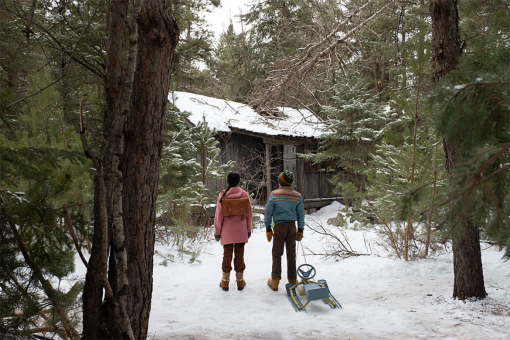Film editor Dean Gonzalez was living in Chicago, finishing work on a film there, when he got a call to come back to Los Angeles for a new project.
"We were just wrapping, and I got a call from John Ramsey, an executive producer with Therapy Studios," Gonzalez says. "He asked if I was interested in doing a music documentary with Dave Grohl."
Grohl is best known to the world as Nirvana's drummer and the longtime singer, guitarist and founding member of the Foo Fighters. He's also heavily involved in film — composing, producing, directing and acting on dozens of projects over the years.
Gonzalez had previously worked on music documentaries, concert films and music videos. He was familiar with Grohl's work and was already impressed by the Therapy team. He didn't hesitate.
"I was like, absolutely," he says. "Let's do this."
The project was What Drives Us, a documentary about life on the road for touring musicians — in many cases, traveling, eating and sleeping in cramped vans before they were famous.
As Grohl explains in the film, while sitting behind the wheel of a red van he used during early tours and recently reacquired, "All of the biggest bands in the world ... they had to start somewhere. Everybody I know started out like this — in a van. You're crammed in there, all together for months, and it can be both disgusting and beautiful all at once. What happens in the van is the foundation of who you become. It creates this unique perspective that we all share."
For Gonzalez, it was a natural fit.
"I've always been around music and musicians," he says. "I played drums when I was younger — I was never good enough — but I think that's what makes me a good editor. Knowing the rhythms and patterns of editing. I think this is what I was meant to do."
Besides plenty of archival concert footage and photos from the road, What Drives Us features interviews with Grohl, U2 guitarist The Edge, Red Hot Chili Peppers bassist Flea, AC/DC singer Brian Johnson, L7 bassist Jennifer Finch, Metallica drummer Lars Ulrich, singer-songwriter Ben Harper, X singer Exene Cervenka, Guns N' Roses guitarist Slash, Aerosmith singer Steven Tyler and Beatles drummer Ringo Starr, plus members of young touring bands RadKey and Starcrawler, among others.
"I think it's great for the band in the van because you get to know each other," Starr says in the film. "You know, you're locked in. I think that was part of us coming together, as the song says."
Along the way, viewers learn the details of managing the confines of the van, packing in all of the gear and making space to eat and sleep, as well as the evolution of vans and the eventual "graduation" — for those who made it big — from vans to buses. They also describe accidents on the road, odd sleeping arrangements, a tale of dead piglets on the roadside, mutual losses and flatulence in cramped spaces.
"Gotta get to the gig, man," Duff McKagan, of Guns N' Roses, succinctly explains.
"It was just incredible," Gonzalez says. "It was a life-changing project to work on."
For sound designer and mixer Brandon Kim, working on What Drives Us was an exciting opportunity to flex his skills while basking in subject matter that thrilled him.
"This was a dream to work on," Kim says. "I'm such a big music fan, and this movie is made for music lovers." Grohl "is a childhood hero of mine," Kim adds. "To work with him is amazing."
Many of the other artists interviewed in the film are also among his musical heroes. "It's so fun to work on something like this," he says. "Sure, it's work, but at the same time you're geeking out to hear their stories."
The documentary "is made for lovers of live music. It shows the sacrifice and all the crazy things the artists had to undergo," Kim explains.
"For the sound team specifically, the most important thing for us was to put the viewer in the middle of the concert," he continues. "Like you're standing there. It involved a lot of re-creation, from the sound in an empty bar to a huge megastadium with the crowd roaring, to an energetic punk club. It was a lot of fun trying to get those ambiences right and give each venue a unique feel.
"We had to make sure all of the sound effects we chose and created were appropriate for the era. That helped bring that footage to life."
Then the film shifts to the quiet, more intimate interview scenes. "It was a really nice contrast," Kim said.
"We also used old interviews from the '80s and '90s," he says. "We had to do a lot of work to restore a lot of those old interview tapes, to make sure they were intelligible."
And, of course, there are many contemporary interviews. "I think it was over 25 artists," Kim says. "For a documentary, it was a lot. It was a lot of work, making sure the dialogue was even, taken from a lot of different cities and settings."
The project initially had the somewhat generic working title of "Van Doc," Gonzalez recalls with a laugh. He came up with the eventual title during the editing process, liking the double meaning driving the van and the personal drive that sends people out on the road in adverse conditions to spread their music.
"Listening to all those incredible interviews, you really see that's what all this is about," he says. "So I just threw it out there, and [Grohl] was like, 'I really like that.' I always assumed at some point it would change."
Both men said Grohl, whose vision drove the film, allowed everyone on the project to work without too much direction or interference.
"A piece of me goes into everything I do," Gonzalez explains. "I feel really passionate about every project I do, I try to put 150 percent into everything. I'm a little obsessive-compulsive — I don't sleep a lot, I'm always thinking about ways to change it, rearrange it, make it better. I keep a notebook by the bed so I can wake up and make notes.
"What's amazing us that Dave let me do that. I put a rough cut together and he said, 'Okay. I was afraid this wasn't going to be interesting to a lot of people — just me — but I can see it now.' ... It really was a collaboration. We talked about the broader vision, but he was amazing in the sense of saying, 'Go for it, man. Do what you do.'"
Gonzalez is used to working on his own but was thrilled with the amount of help he had on What Drives Us. Therapy's research team found him plenty of photos and footage in a variety of mediums that he used in assembling the final product.
"Everything matters," he insists. "Every photograph."
Although there was a lot of concert photography and tour footage to choose from, the focus was always the interviews, Gonzalez says.
"A film organically can lead you where it wants to go," he says. "This film definitely did that. It's a rollercoaster. It takes you to these different parts where it's fun, then inspirational, then sad. Basically, at the end of it, you're ready to go watch a live show. You need to get out there."
He recalls, for instance, editing a scene in which the Foo Fighters are performing their song "My Hero."
"Dave came in, he was like, 'Ooh, old footage.' And he knew exactly where it was — he knew it by the T-shirt he was wearing. It brought him back to that moment. It was a lot of that, bringing [the musicians] back to a specific moment." That song was pivotal in Kim's process, too.
"Going into this, I thought I'd have to do a lot of work on it" because of the varied qualities of so much archival footage, he says.
"But once I heard it ... it was like one of the Foo Fighters' first recordings of 'My Hero' — it had a really old and crushed quality that I liked. It already had the feeling that you're there," Kim says. "It gives you the feeling of being at a live concert. You're watching it on a screen, but I wanted to represent it in the best way possible. ... I had to put in a lot of work to recreate what it would be like at a stadium."
Kim started with Therapy Studios as an intern in 2014. His first project with the company was Sonic Highways, a documentary miniseries about the Foo Fighters' 20th anniversary — so he had some experience working with Grohl already. "It was a very good learning experience," Kim said.
Founded in 2005 and based in Playa Vista,California, Therapy Studios is a small team of specialists in graphic design, visual effects and other elements of postproduction. Over the years, the company has carved out niches in both the music and videogame industries.
Over the years, Kim worked his way up the ranks, from intern to assistant to, on this project, sound supervisor. The sound team also included Justin Lebens and Dillon Cahill.
It was a pleasure working on another project with Grohl.
"He's actually not that hands-on," Kim says. "He has a pretty broad idea of what he wants a project to be, but once you tap into what he wants, he's not very nit-picky. He's very trusting, he'll let you do what you think is best in your field."
Mostly, Grohl provided guidance that helped to focus the project to fit his vision, Kim explains. "He'd say, 'I think it'd be cool if you tried this.' It was a lot of experimentation," he says. The film is among the first new offerings from the Coda Collection, a channel from Amazon Prime that offers concert films, music documentaries, rare archival performances and original episodic music programming series.
Although Coda has heavily promoted What Drives Us, which premiered on April 30, Kim says there were no restrictions on the production or instructions from Coda's leadership to adhere to any specific style or feel.
"It was free rein," he says. "I approached it the way I would any project."
Therapy, meanwhile, continues to evolve.
"The team has solidified over the years," Kim says. "We've always been a small team, and we still are. So it's cool to be working on bigger projects but still maintaining that small team."
Therapy, he says, has always been "a real do-it-yourself, roll-your-sleeves-up-and- get-the-job-done" kind of operation, whether they're working on a 30-second commercial spot or a feature film.
Looking ahead, Kim says his plate is already full.
"There's always a lot of Dave's projects in the works," he says. "One just came out, it's called From Cradle to Stage, on Paramount+. It's about rock stars and their moms."
The first episode, starring Dan Reynolds of Imagine Dragons, premiered in May. Other episodes spotlight Pharrell Williams, Miranda Lambert, Tom Morello, Brandi Carlile and Geddy Lee. He's also working on a horror film.
Gonzalez is taking it easy at the moment, looking for the right next job, but he, too, expects to work with Therapy Studios again.
"They do phenomenal work," he says. "Those are the kind of people I like to work with: passionate about what they do. This is the first project I did with them, and I couldn't have asked for a better group of people to work with."
Gonzalez says he's happy with What Drives Us because it imparts a message that's both inspirational and heartwarming.
"Sometimes, magically, things will connect," he says. "We just really wanted people to be inspired. In the age of instant fame, with YouYube, American Idol and stuff — you still have to put in the miles, you have to put in the hours, to be great at what you do.
"You can do it, if you have the drive and determination. Just go for it. You can truly change lives."











